Dark underarms can be a source of embarrassment and insecurity for many individuals. The good news is that there are several options for lightening dark underarms, both through home remedies and medical treatments.
Causes of dark underarms

There are several reasons why one may have dark underarms, such as:
-
Hormonal changes
-
Shaving or waxing
-
Use of certain antiperspirants or deodorants
-
Friction or rubbing of the skin
-
Acanthosis nigricans (a skin condition characterised by dark, thickened patches of skin)
Determining the exact cause of darker underarms is essential to choosing the best course of action for prevention or therapy. Seeing a dermatologist can assist in determining the underlying cause of the problem and offer tailored advice for a successful resolution.
Understanding hormonal influences on underarm skin
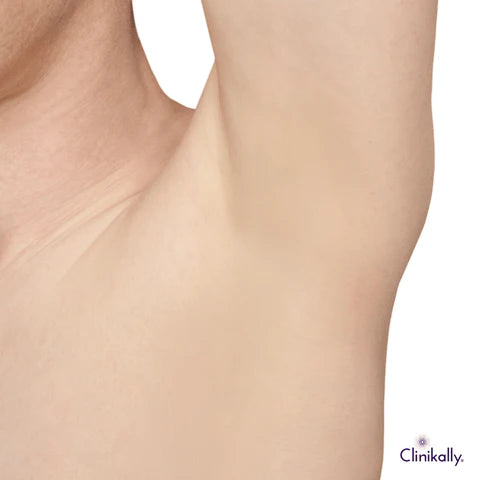
Hormonal changes can affect the skin in the underarm area, as they do in other parts of the body. Hormones play an important role in regulating various skin functions, and hormonal fluctuations can affect the condition, appearance, and sensitivity of the skin in the underarm region. Here's how hormonal factors can impact underarm skin:
-
Sweat Glands and Body Odour: Hormonal changes, particularly during puberty or menopause, can cause increased sweat gland activity, resulting in increased perspiration in the underarm area. Changes in sweat composition caused by hormonal changes can contribute to body odour.
-
Hair Growth and Thickness: Hormones, particularly androgens (such as testosterone), can influence hair growth patterns and thickness in various areas of the body, including the underarms. Hormonal changes can cause either increased or decreased hair growth.
-
Skin Sensitivity and Irritation: Hormonal fluctuations, particularly during certain phases of the menstrual cycle or pregnancy, can make the skin more sensitive. This increased sensitivity may make the underarm skin more prone to irritation from shaving, waxing, or using certain deodorants or antiperspirants.
-
Melanin Production: Hormonal changes can influence melanin production in the skin, potentially resulting in pigmentation changes. This may cause the underarm skin to darken or lighten.
-
Glandular Activity: The underarm area contains apocrine glands that are sensitive to hormonal changes. These glands can produce a different type of sweat in response to stress or hormonal fluctuations, potentially influencing the microbial environment and contributing to body odour.
-
Acne and Folliculitis: Hormonal imbalances may contribute to acne or folliculitis in the underarm area, particularly when sweat production, bacteria, and skin irritation are all present.
Hormonal changes occur naturally throughout life, including puberty, menstruation, pregnancy, menopause, and certain medical conditions or treatments. While hormonal fluctuations can affect underarm skin, the extent and specific effects vary greatly between individuals. Maintaining proper hygiene, using gentle skincare products, wearing breathable clothing, and selecting appropriate deodorants or antiperspirants can all aid in the management of underarm skin health. If you have persistent skin problems or concerns about hormonal changes in the underarm area, a dermatologist can provide personalised advice and treatment options that are tailored to your specific needs.
Impact of lifestyle and hygiene on underarm skin tone

Lifestyle and hygiene habits have a significant impact on the health and appearance of underarm skin tone. Several factors can influence underarm skin tone, and certain habits can help you achieve a healthier, more even-toned underarm area:
-
Regular Hygiene Practices: Proper hygiene, including regular underarm cleansing, aids in the removal of dirt, bacteria, and sweat that can accumulate and potentially cause skin irritation or darkening. During showers, use a gentle, pH-balanced cleanser to gently cleanse the underarms.
-
Hair Removal Methods: Skin irritation can result after shaving, waxing, or using depilatory treatments, particularly if these procedures are done frequently or with harsh products. Because of inflammation or post-inflammatory hyperpigmentation, irritated skin may seem darker. To ease the skin, think about removing hair gently and then moisturising the affected area.
-
Avoiding Harsh Products: The chemicals in some deodorants and antiperspirants may irritate skin or trigger allergic reactions, changing the colour of the skin under the arms. Choose hypoallergenic, mild, and fragrance-free products.
-
Moisturization: Moisturising the underarm area can help maintain skin health and prevent dryness or irritation. To nourish the skin and maintain its barrier function, use a mild, hydrating moisturiser designed for sensitive skin.
-
Exfoliation: Regular exfoliation with gentle exfoliating products or methods can help remove dead skin cells and prevent debris buildup, which can contribute to darker underarm skin. However, avoid over-exfoliation, which can cause skin irritation.
-
Wearing Breathable Clothing: Tight-fitting or synthetic clothing can trap sweat and contribute to skin irritation. Choose breathable fabrics like cotton to allow air circulation and reduce moisture buildup in the underarm area.
-
Healthy Lifestyle Choices: A healthy diet, regular exercise, adequate hydration, and stress management can all improve overall skin health, including the underarms. Consuming foods high in antioxidants and nutrients promotes skin health and regeneration.
-
Sun Protection: While the underarms may not be exposed to direct sunlight, UV protection is essential. Apply sunscreen or avoid prolonged sun exposure to avoid underarm pigmentation changes.
Remember that changing the colour of your underarm skin can take time, and individual results may vary. Consistency in healthy hygiene practises, appropriate product selection, and skin care can all help to maintain an even-toned and healthy underarm area. If concerns persist or there are sudden changes in underarm skin tone, consulting a dermatologist can provide personalised advice and treatment options.
Do dark underarms go away?
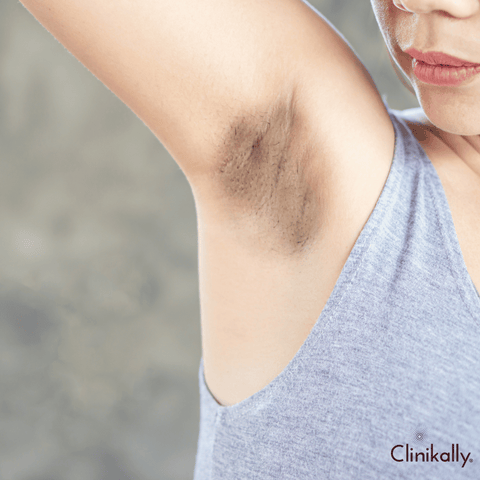
It is important to remember that while dark underarms can be a source of embarrassment, they are a common issue that can often be improved with the right treatment. Consulting a dermatologist can help determine the best course of action, and finding the right combination of home remedies and medical treatments can help lighten dark underarms. One of the most common questions related to dark underarms is "Will they go away?" The answer is yes. With the right treatment and preventive measures, dark underarms can be lightened and eventually fade away. However, the duration of treatment may vary depending on the individual case and the cause of the dark underarms.
Another question that often arises is, "Why are my underarms so dark?" There can be a variety of causes, including hormonal changes, excessive shaving or waxing, use of certain antiperspirants or deodorants, friction or rubbing of the skin, or a skin condition called Acanthosis Nigricans. A dermatologist can help determine the specific cause of dark underarms and recommend the most effective treatment option.
When it comes to lightening dark underarms, there are a variety of options available. Home remedies such as lemon juice, baking soda, coconut oil, and cucumber juice can be effective in lightening the skin. Medical treatments such as topical creams, laser therapy, microdermabrasion, and chemical peels can also be used to improve the appearance of dark underarms.
Finally, it is important to be cautious when using dark underarm removal cream, as some of these products can be harsh and potentially harmful to the skin. It is always best to consult with a dermatologist before using any new product on the skin, especially in sensitive areas like the underarms.
Time frame for underarm skin lightening

The time it takes to lighten the underarm skin varies greatly depending on several factors, including the cause of the darkening, individual skin type, and the specific treatment or regimen used. Here are some of the factors that can affect how long it takes to lighten underarm skin.
-
Underlying Cause: Several factors can affect how long it takes to lighten the underarm skin, including friction, shaving, deodorant use, hormonal fluctuations, and hyperpigmentation. Treatment effectiveness depends on addressing the underlying cause.
-
Treatment Consistency: To lighten the skin under the arms, it is critical to stick to a skincare regimen or treatment plan. Using products or receiving treatments on a consistent and as-directed basis can lead to more visible results over time.
-
Type of Treatment or Products Used: The effectiveness and speed of skin lightening can vary depending on the products or treatments used. Topical creams containing kojic acid, vitamin C, alpha hydroxy acids (AHAs), or retinoids, for example, may show gradual improvement over weeks to months.
-
Skin Sensitivity and Reactivity: Individual skin sensitivity and reactions to certain treatments or ingredients can affect how quickly or effectively the skin lightens. To avoid irritation, some people may need to proceed with caution or use milder formulations.
-
Skin Regeneration Cycle: Skin cell turnover and regeneration influence the rate at which newer, lighter skin cells replace older, darker skin cells. This natural process, which can take several weeks to months, contributes to the gradual lightening of the skin.
-
Professional Treatments: Professional treatments such as chemical peels, laser therapy, or microdermabrasion performed by dermatologists or skin care professionals may produce faster results than over-the-counter products, but they frequently necessitate multiple sessions for noticeable improvement.
You have to be realistic if you want the skin beneath your arms to lighten. Significant lightening may take weeks or months, and it may not always be feasible to completely reverse darkness, particularly for certain skin types or underlying medical issues. Although using over-the-counter or DIY therapies can help lighten the skin under the arms, it's important to stay away from harsh treatments that could irritate or damage the skin even more. In the event that DIY solutions are ineffective or if you're worried about darkening underarm skin, a dermatologist can provide customised advice and treatments tailored to your skin type and problems.
Factors affecting the reversal of dark underarms
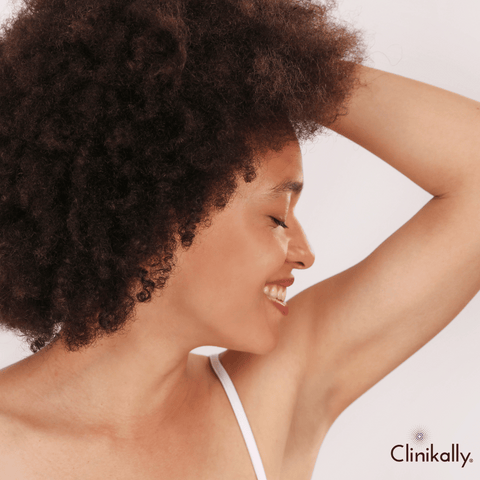
Reversing dark underarms entails addressing the various factors that contribute to skin darkening in that area. Several factors can influence the effectiveness of dark underarm treatment:
-
Identifying and treating the underlying cause of dark underarms is critical. Hormonal changes, frequent shaving, friction, the use of certain deodorants, hyperpigmentation, or skin conditions such as acanthosis nigricans are all common causes. Treating the underlying cause can help reverse darkening.
-
Different skin types react differently to treatments. Some people may have more sensitive skin, making them more susceptible to irritation from certain products or treatments. Treatments must be tailored to specific skin types for effective results.
-
Patience and consistency are essential when following a treatment regimen. Reversing dark underarms can take time, and patience is required to see visible results. Consistent use of recommended products or treatments is required for results.
-
Topical treatments, such as skin-lightening creams containing kojic acid, vitamin C, arbutin, licorice extract, or niacinamide, can help reduce pigmentation and gradually lighten the skin over time. Patience and consistent application as directed are essential.
-
Exfoliation helps remove dead skin cells, allowing newer, lighter skin to emerge. However, excessive exfoliation can irritate the skin and worsen the condition.
-
Chemical peels, laser therapy, and microdermabrasion performed by skincare professionals can provide faster results than over-the-counter products. These treatments frequently require multiple sessions and may include downtime or recovery periods.
-
Avoiding harsh chemicals, aggressive hair removal methods, tight clothing, or irritant-causing products can help prevent further darkening and aid in the reversal process.
-
Sun protection is essential for the underarm area. If you want to stop additional pigmentation or darkening, cover up or use sunscreen on the exposed area.
It is important to note that results will differ from person to person, and complete reversal of dark underarms may not always be possible, especially in cases of certain medical conditions or deeper pigmentation. A dermatologist can provide customised recommendations and treatment options based on your skin type, concerns, and the underlying cause of darkened underarms.
Home remedies for lightening dark underarms

People employ a variety of natural methods to help brighten their dark underarms. However, each person's experience with these therapies may differ, so consistency is essential. Here are a few frequently recommended natural remedies:
-
Lemon Juice: The natural bleaching properties of lemon juice can help lighten dark underarms. Simply apply fresh lemon juice to the affected area and leave on for 10-15 minutes before rinsing off.
-
Baking Soda: Mix baking soda with water to create a paste, then gently scrub the paste onto the underarms for a few minutes before rinsing off.
-
Coconut Oil: Massage coconut oil onto the underarms to moisturise and lighten the skin.
-
Cucumber: Grate a cucumber and apply the juice to the underarms. Leave on for 10-15 minutes before rinsing off.
Before using these treatments frequently, it's crucial to undertake a patch test to make sure you don't have any allergies or negative reactions to the substances. It's important to use these medicines consistently because the effects might not show up right away. To make sure these cures are right for you, especially if you have sensitive skin or any skin issues, see a dermatologist before using them.
Natural bleaching agents for underarm skin

Several natural ingredients have properties that may aid in the lightening or bleaching of darkened underarm skin. While these natural remedies may help gradually reduce pigmentation, they may not provide immediate results, and individual responses may vary. Here are some natural ingredients that have been linked to skin-lightening properties:
-
Lemon Juice: Citric acid, found in lemon juice, acts as a natural bleaching agent. Apply diluted lemon juice to the underarms and rinse after a few minutes. However, be cautious because lemon juice can cause skin irritation or sensitivity in some people, particularly those with sensitive skin or who are exposed to sunlight.
-
Potato: Potatoes have vitamin C and enzymes that can lighten skin. After applying potato slices or juice to the underarms, let it sit for ten to fifteen minutes before washing.
-
Cucumber: Cucumbers have calming and slightly bleaching qualities. Apply cucumber juice or slices to the underarms and leave them on for a few minutes before rinsing.
-
Aloe Vera Gel: Aloe vera gel has skin-soothing properties and may aid in skin lightening. Apply pure aloe vera gel to your underarms and leave it on for a few minutes before rinsing.
-
Yoghurt: Lactic acid in yoghurt may help exfoliate and lighten skin over time. Apply plain yoghurt to the underarms and leave it on for a few minutes before rinsing.
-
Turmeric: Turmeric contains curcumin, which has natural skin-brightening properties. Apply a paste of turmeric powder and water or yoghurt to the underarms. Allow it to sit for a few minutes before rinsing it off. Turmeric can temporarily stain the skin yellow, so use it with caution.
-
Papaya: Papaya contains enzymes such as papain, which may aid in skin exfoliation and lightening. Apply mashed papaya or papaya juice to the underarms and leave on for a few minutes before rinsing.
-
Licorice Extract: Licorice extract contains compounds that may aid in the inhibition of melanin production. Look for licorice extract in skincare products, or apply diluted licorice extract to the underarms.
Before using these natural remedies, you should conduct a patch test to ensure you do not have any adverse reactions or allergies. Additionally, consistent and regular use over time may be required to see noticeable results. If you have concerns about darkened underarm skin or are prone to skin sensitivities, see a dermatologist for personalised advice and treatments.
DIY underarm scrubs and masks
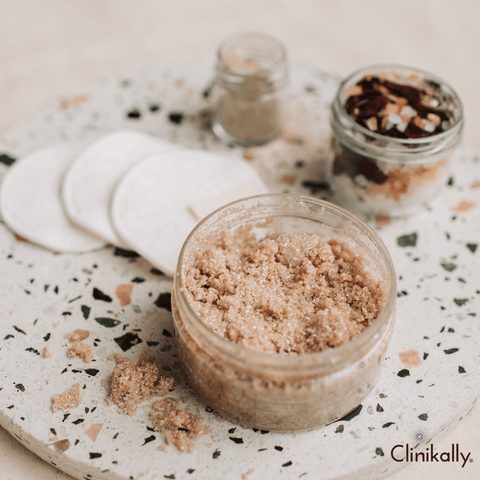
Using natural ingredients to make DIY underarm scrubs and masks can help exfoliate, cleanse, and potentially lighten the skin in that area. Here are some easy DIY underarm scrub and mask recipes:
-
Lemon and Sugar Scrub: Make a paste with equal parts freshly squeezed lemon juice and granulated sugar. Gently massage this scrub into damp underarm skin for a few minutes, then thoroughly rinse off. The sugar exfoliates, and the citric acid in the lemon may help lighten the skin.
-
Baking Soda Scrub: To make a paste, combine one tablespoon of baking soda with adequate water or coconut oil. After a few minutes of gently massaging the paste into your damp underarm area in circular motions, rinse it off. Baking soda exfoliates the skin to get rid of dead cells.
-
Turmeric and Yogurt Mask: Make a paste by combining 1 teaspoon of turmeric powder with 2 tablespoons of plain yoghurt. Cleanse your underarms and apply this combination. Let it sit for ten to fifteen minutes, then rinse it off. Yoghurt calms and hydrates the skin, while turmeric brightens the complexion.
-
Cucumber and Aloe Vera Mask: Combine one tablespoon of aloe vera gel with the blended or mashed half of a cucumber. Clean underarms should be covered with this mask, which should be left on for 15 to 20 minutes before washing. Cucumber is known to lighten skin, while aloe vera calms and moisturises the skin.
-
Papaya and Honey Mask: A tablespoon of honey should be combined with a few mashed pieces of ripe papaya. Cleanse your underarms, then apply this mask. Let it sit for 15 to 20 minutes, then rinse it off. While honey soothes and moisturises, papaya's enzymes may help exfoliate and brighten the skin.
-
Coconut Oil and Coffee Grounds Scrub: To make a paste, combine 1 tablespoon coconut oil and 2 tablespoons ground coffee. After a few minutes of gently massaging this scrub over damp underarm skin, rinse it off. Coffee grinds provide a physical exfoliation, while coconut oil adds hydration.
Before using these DIY treatments, always perform a patch test to ensure you do not have any adverse reactions or allergies to the ingredients. Additionally, avoid using these treatments on irritated or broken skin, and discontinue use if you experience any discomfort or adverse reactions. Consult a dermatologist for personalised advice and recommendations if you have persistent concerns or sensitive skin.
Medical treatments for lightening dark underarms

Dermatologists may advise several medical interventions or treatments to lighten dark underarms, depending on the severity and underlying cause of hyperpigmentation. The following medical procedures are frequently used to treat dark underarms:
-
Topical Creams: There are several over-the-counter creams available that claim to lighten dark underarms. However, it is important to choose a cream that is specifically formulated for this purpose and to follow the instructions on the package.
-
Laser Treatment: A laser treatment called Q-switched laser therapy can be used to remove pigmentation and lighten dark underarms. It is important to consult a dermatologist before undergoing this treatment.
-
Microdermabrasion: This procedure involves using a diamond-tipped wand to exfoliate the top layer of skin and improve its appearance.
-
Chemical Peels: A chemical peel can be used to lighten the skin and reduce the appearance of dark underarms.
It is important to note that, while these treatments can be effective, they may not work for everyone. Consult a dermatologist to determine the best course of action for your specific case. You can now consult a dermatologist without having to wait for 2-3 months to book an appointment with seamless and affordable online dermatologist consultation at Clinikally from leading skin and hair experts in India.
Laser therapy for underarm lightening

Laser therapy can be an effective treatment option for underarm lightening or hyperpigmentation in the underarm area. Laser treatments work by reducing the concentration of melanin, the pigment responsible for skin colour, and promoting a more even skin tone. Here's what you should know about underarm lightening laser therapy:
-
Laser therapy works by targeting and breaking down excess melanin in the skin's deeper layers with specific wavelengths of light. This procedure aids in the reduction of pigmentation and the growth of new, lighter skin cells.
-
Various types of lasers can be used for skin lightening treatments, such as Q-switched Nd:YAG lasers or fractional lasers. These lasers target melanin without causing significant damage to the surrounding skin.
-
The laser device emits controlled pulses of light onto the targeted areas of the underarms during the procedure. The laser's energy is absorbed by melanin, causing it to degrade. Depending on the severity of hyperpigmentation, multiple sessions may be required for optimal results.
-
The benefits of laser therapy for underarm lightening include reduced pigmentation, a more even skin tone, and smoother skin texture. In comparison to other treatments, it is a non-invasive procedure with minimal downtime.
-
While laser therapy can be effective, it is critical to seek the advice of a qualified dermatologist or skincare professional before undergoing treatment. Individuals with darker skin tones should exercise caution because certain lasers may cause post-inflammatory hyperpigmentation or hypopigmentation if not used properly.
-
It is critical to follow the dermatologist's post-treatment instructions after laser treatment. To aid in the healing process, avoid sun exposure, use sunscreen, and apply soothing creams or moisturisers as directed.
-
While laser treatments are generally safe, they may cause temporary redness, swelling, or mild discomfort in the treated area. More severe side effects, such as blistering or changes in skin texture, may occur in rare cases.
-
Individuals may experience varying degrees of success with laser therapy for underarm lightening. Some people may notice improvement after just a few sessions, while others may require additional treatments to achieve the best results.
Before deciding on laser therapy, it is critical to consult with a qualified dermatologist or skincare professional. They can evaluate your skin type, discuss your expectations, and decide whether laser treatment is appropriate for your specific concerns and skin condition. They can also advise on the number of sessions required and any potential risks associated with the procedure.
Topical treatments prescribed by dermatologists
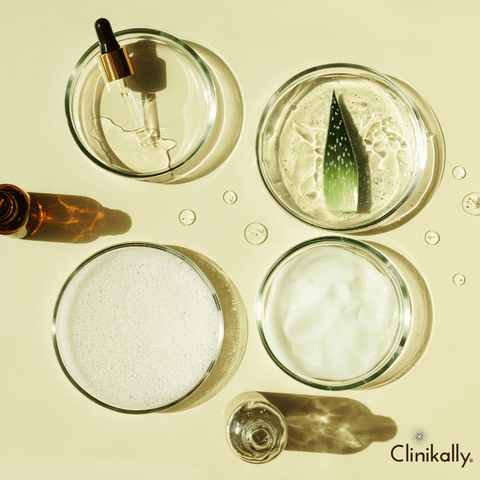
Dermatologists may recommend several topical therapies for a variety of skin issues, such as darker underarms or hyperpigmentation. Active chemicals in these treatments frequently target pigmentation, exfoliate the skin, or stop the development of melanin. Dermatologists frequently recommend the following topical therapies to alleviate underarm darkening:
-
Hydroquinone: Hydroquinone is a skin-lightening agent that inhibits melanin production. It is commonly prescribed in concentrations ranging from 2% to 4% and helps lighten dark areas of the skin, including the underarms.
-
Retinoids: Topical retinoids such as tretinoin (Retin-A), adapalene, and tazarotene can promote cell turnover and exfoliation. They help improve skin texture, reduce pigmentation, and even out skin tone when used consistently.
-
Kojic Acid: This fungal derivative is used as a skin-lightening agent. It's known for its ability to inhibit melanin production and is often used in creams or serums to address hyperpigmentation issues.
-
Azelaic Acid: Azelaic acid is used to treat pigmentation issues and has skin-brightening properties. It can help reduce the appearance of dark spots and uneven skin tone.
-
Vitamin C Serums: Topical vitamin C (ascorbic acid) serums can help lighten and minimise skin discoloration. They also have antioxidant properties that protect the skin from free radical damage.
-
Corticosteroids: Dermatologists may prescribe topical corticosteroids to reduce inflammation and pigmentation in some cases. However, because of the potential side effects of long-term use, these are typically used for short-term treatment.
-
Combination Formulations: Based on an individual's skin type and condition, dermatologists may also prescribe custom combination creams or formulations containing a mix of active ingredients to target specific concerns.
It's important to adhere to your dermatologist's recommendations on the frequency of application, length of usage, and any adverse effects of these topical therapies. It's suggested to conduct a patch test before full administration of these items because some people may experience skin sensitivity or irritation. Additionally, since these treatments can make skin more sensitive to the sun, it's imperative to wear sun protection (like sunscreen) during the treatment period. The best way to get individualised advice and suitable treatment choices for safely and successfully treating underarm darkening or other skin issues is to consult a dermatologist.
How to prevent dark underarms

Using proper skincare techniques and reducing triggers for inflammation or pigmentation under the arms are key to preventing dark underarms. Here are a few suggestions to help stop underarm darkening:
-
Avoiding the use of harsh soaps or deodorants
-
Exfoliating regularly to remove dead skin cells
-
Wearing loose-fitting clothing to reduce friction
-
Using sunscreen to protect the skin from further pigmentation
-
Avoiding shaving or waxing
By incorporating these preventive measures into your skincare routine and being mindful of factors that may contribute to underarm darkening, you can help maintain healthy and even-toned underarm skin.
Best practices in underarm skincare

Keeping your underarms clean, smooth, and free of issues like odour, inflammation, or discoloration can be achieved by practicing good skincare. The following are top tips for taking care of your underarms:
-
Regular Cleansing: While showering or bathing, gently cleanse the underarms with a pH-balanced cleanser. Rinse the soap thoroughly to avoid residue buildup, which can irritate.
-
Exfoliation: Exfoliate the underarms 1-2 times per week to remove dead skin cells and prevent ingrown hairs. Exfoliate the area gently with a mild exfoliating scrub or a soft brush.
-
Hair Removal: Select hair removal methods that are gentle on your skin and cause the least amount of irritation. Shaving, waxing, depilatory creams, and laser hair removal are all options. Avoid overshaving and using harsh hair removal products that can irritate your skin.
-
Moisturising: To prevent dryness and soothe the skin, keep the underarm area moisturised. Use a non-comedogenic, fragrance-free moisturiser designed for sensitive skin.
-
Avoiding Harsh Products: Use deodorants and antiperspirants free of harsh chemicals, alcohol, and fragrances that can cause irritation or allergic reactions. Consider natural or aluminum-free substitutes.
-
Allowing the Skin to Breathe: Wear breathable clothing made of natural fibres, such as cotton, to allow air circulation and reduce moisture buildup under the arms.
-
Sun Protection: If your underarms are exposed to sunlight, apply sunscreen to protect them. This aids in the prevention of pigmentation changes and skin damage.
-
After-Shaving Care: To soothe the skin and prevent irritation, apply a soothing aftershave or aloe vera gel after shaving. To minimise irritation or stinging, wait to apply deodorant or antiperspirant after shaving.
-
Good Hygiene Practises: Maintain good hygiene practises by changing clothes regularly, especially after sweating, to prevent bacterial growth and body odour.
-
Healthy Lifestyle: Eat a well-balanced diet, drink plenty of water, and control your stress levels because these things can also affect the health of your skin.
-
Regular Skin Checks: Keep an eye out for any changes, irritations, or strange developments on the skin under your arms. If you have any persistent problems or concerns, see a dermatologist for an accurate diagnosis and treatment.
Keep in mind that every person has a different type of skin, so it is important to find products and practises that suit your concerns and skin type. If you have persistent irritation, darkening, or any other unusual symptoms in the underarm area, consult a dermatologist for personalised advice and treatment.
Choosing the right deodorants for sensitive underarm skin
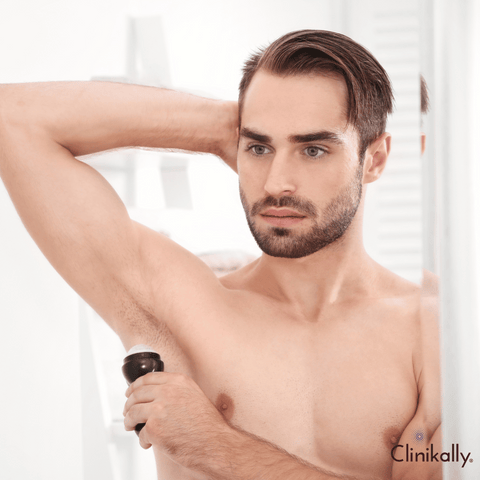
Searching for deodorants with mild formulas that reduce irritation while maintaining potent odour prevention is the key to selecting the best deodorant for sensitive underarm skin. Fragrance-free or mildly scented products, aluminum-free formulas, hypoallergenic and dermatologist-tested products, products with mild and alcohol-free ingredients, natural and organic formulations, roll-on or stick formulas, pH-balanced products, patch-testing new products, and suggestions for unscented options are some guidelines for choosing sensitive underarm deodorants. It's critical to locate a deodorant that minimises odour and is kind to delicate skin. Personal preference, skin reactivity, and individual allergies can all have an impact on the deodorant choice. For guidance on items that are appropriate for your sensitive underarm skin, see a dermatologist if you have ongoing skin irritation or concerns.
Bottom Line
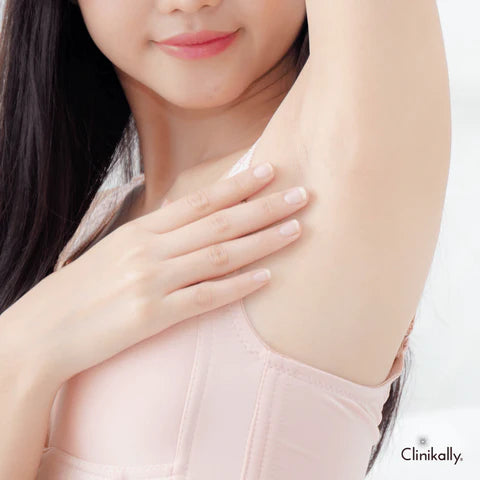
In conclusion, dark underarms can be a source of insecurity for many individuals, but with the right treatment and preventive measures, they can be lightened and eventually fade away. Consult a dermatologist to determine the best course of action and find the right combination of home remedies and medical treatments. Always be cautious when using dark underarms removal cream, and consult a dermatologist before using any new product on the skin, especially in sensitive areas like the underarms.
Summarizing the most effective methods for underarm lightening

This is a list of the best ways to lighten underarm hair, including topical treatments, chemical peels, laser therapy, natural therapies, good skincare routines, and doctor consultations. The degree of hyperpigmentation, skin type, and method adherence can all affect how these techniques perform for various people and yield varied results. Effective underarm lighting requires time, consistency, and good skincare habits.
































